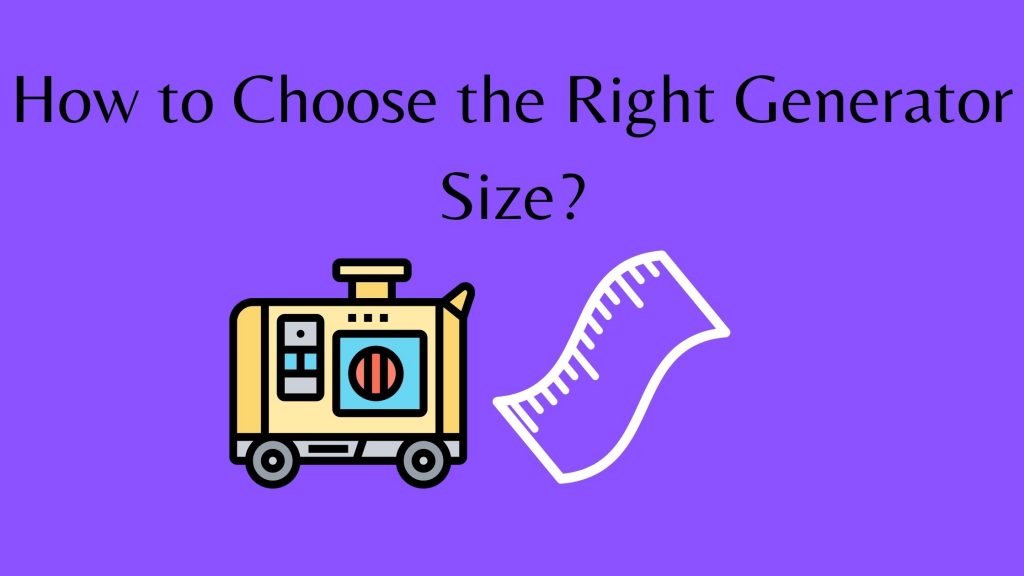Introduction
When it comes to choosing the right generator, size means we should not only look for the electric power required to run your appliances or equipment but also the power required to start those appliances or equipment. With an under-sized generator, we won’t be able to power appliances or equipment; meanwhile, with an over-sized generator we will end up wasting money. In this post, we are going to discuss some generator sizing basics before buying or renting out a suitable generator.

Calculating the load generator size load
Determining the power of the generator, both the running wattage and the surge wattage have to be counted. Where the running wattage represents the power needed to keep appliances or equipment on and the surge wattage varies based on the appliances which account for the power needed to start any electric motors. Surge wattage can be determined by multiplying the running wattage by three times.
By accumulating the wattage of all the appliances needed to power, we can calculate the amount of power required. And from there we can work out the minimum electrical input needed from a generator.
Knowing how to convert kW to kVA
The power requirement is in kilowatts (kW), which is the actual unit of electrical energy that will be used by the load to produce a useful working output.
Generators are evaluated in kilo-volt-amperes (kVA), a measure of apparent power that tells the combination of real and wasted power of an electrical system. In a 100% efficient system kW = kVA. Since electrical systems are never 100% efficient, not all of the power will be used to produce a useful work output.
The conversion between kVA and kW is the efficiency of the electrical system expressed as a power factor between 0 and 1: the closer the power factor is to 1, the more efficient the kVA is being transformed into beneficial kW. The international standards rate generators as having a power factor of 0.8.
For example; If an Air Conditioner has 28kW power and its power factor of 0.80 then the kVA should be kW/pf that is kVA35.
Defining the running requirements of the generator
If the usage of the generator is as the main power supply, we will be needing the size for 70-80% capacity, and leaving a 20-30% safety margin will help improve performance and also better for potential power requirements. Hence a generator operating at maximum capacity for more than 30 minutes would bring adverse results in long-run efficiency.
Understanding the advantages of choosing the correct generator size
Out of more advantages below are significant benefits obtained by choosing a suitable generator load size process:
- Reduced or less likely chance of generator damage
- No unexpected electrical system failures
- Guaranteed performance productivity
- Avoid shutdowns due to capacity overload
- Increased lifetime of the generator
- Assured personal safety
- Saving cost on generator maintenance
Contact a certified electrician
We would always recommend contacting a certified electrician before buying or renting a generator. Please get in touch for more.
Conclusion
Choosing the correct generator size is vital for any end-user of the generator. In this article we have looked at calculating the load size of the generator, knowing how to convert kW to kVA, defining the running requirements of the generator, defining the running requirements of the generator, understanding the advantages of choosing the correct generator size, and recommending to contact a certified electrician before buying or renting out a generator.
Have questions? Let us know in the comment below.
For more articles visit https://mrengineering.lk/

